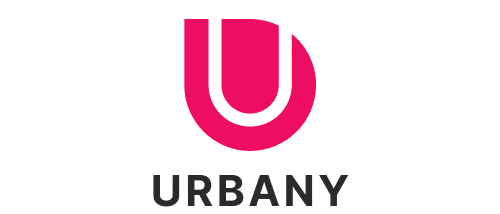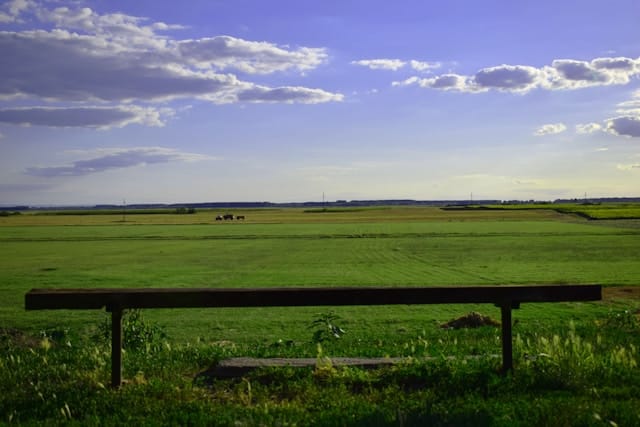In the heart of our bustling urban landscapes, there are paradoxically vast swaths of vacant land. These under-utilized spaces present an untapped resource with countless potential benefits if properly harnessed. They offer a plethora of opportunities for city planners, property developers, environmentalists, and community activists alike. With the right strategies and creative approaches, these vacant lands can be transformed into valuable assets that contribute to the vitality and sustainability of our cities. To start, we’ll explore some of the most effective strategies for making the most of vacant land in urban settings.
Harnessing the Potential of Green Spaces
One of the most common and arguably beneficial uses of vacant urban land is the creation of green spaces. These can take the form of parks, community gardens, or even urban farms.
Lire également : How to Approach Heritage Conservation in Urban Redevelopment?
Green spaces provide numerous benefits, both tangible and intangible. They enhance the aesthetic appeal of urban landscapes, improve the mental and physical health of residents, and foster a sense of community by providing a shared space for social interaction. Furthermore, they contribute to environmental sustainability by promoting biodiversity, improving air and water quality, and mitigating the heat island effect common in urban areas.
Community gardens and urban farms, in particular, have the added benefit of promoting food security and sustainability. By providing a local source of fresh, organic produce, they reduce reliance on long-distance food supply chains, thereby reducing carbon emissions and promoting healthier diets.
Lire également : What Are the Financial and Operational Benefits of Building Automation Systems?
Incorporating Affordable Housing Units
Another viable strategy for utilizing vacant land in urban areas is through the development of affordable housing units. The growing urbanization trend means that housing demand in cities is continuously increasing. However, the supply of affordable housing units has not kept pace, resulting in skyrocketing property prices and increased incidences of homelessness.
Strategically developing vacant land for affordable housing purposes can help alleviate these issues. It can increase the supply of affordable homes and reduce the economic disparity among city residents. Furthermore, it can revitalize underdeveloped areas and stimulate economic growth by attracting new residents and businesses.
However, this strategy must be executed thoughtfully to avoid creating high-density residential areas that are devoid of amenities or community spaces. It is essential to incorporate elements of mixed-use development, such as retail spaces, public amenities, and green spaces, to create complete, livable communities.
Establishing Urban Innovation Hubs
In the 21st century, innovation is a significant driver of economic growth. Therefore, another compelling strategy for utilizing vacant land in urban areas is the establishment of urban innovation hubs. These hubs are ecosystems designed to foster collaboration, creativity, and entrepreneurship.
By providing shared workspaces, resources, and networking opportunities, these innovation hubs can stimulate the growth of startups and small businesses. They can attract talent and investment, thereby driving economic growth and job creation in the city.
Besides, such hubs can serve as a platform for testing and implementing smart city solutions, such as advanced transportation systems, renewable energy sources, and intelligent infrastructure. This can enhance the livability and sustainability of the city while positioning it as a leader in technological innovation.
Promoting Art and Culture through Creative Placemaking
Urban vacant lands can also be transformed into vibrant cultural hotspots through creative placemaking. This strategy involves using art and culture to animate public spaces, engage the community, and invigorate local economies.
Creative placemaking can take various forms, from street art installations and public performances to cultural festivals and art markets. By providing a platform for local artists and cultural practitioners to showcase their work, these initiatives enhance the cultural vitality of the city. They can also stimulate economic activity by attracting tourists and encouraging local spending.
Additionally, creative placemaking can foster a strong sense of community and place identity. It can facilitate community engagement and inclusivity by providing opportunities for residents to participate in cultural activities and express their creativity.
Prioritizing Sustainable Infrastructure Development
Lastly, an effective strategy for utilizing vacant urban land involves the development of sustainable infrastructure. This can include renewable energy installations, green buildings, water management systems, waste recycling facilities, and sustainable transport infrastructure.
Sustainable infrastructure development not only maximizes the utility of vacant land but also contributes significantly to urban sustainability. It reduces the city’s environmental footprint, enhances resource efficiency, and improves the resilience of the city to environmental shocks and stresses.
Moreover, it can stimulate economic growth by creating green jobs and attracting investment in the green economy. This can position the city as a leader in sustainable development and enhance its competitiveness on the global stage.
It is evident that the potential of vacant land in urban areas is immense. With the right strategies, these under-utilized spaces can be transformed into valuable assets that contribute significantly to the vitality, sustainability, and economic growth of our cities.
Expanding Recreational Facilities and Sports Complexes
Vacant urban lands can also provide an opportunity to expand recreational facilities and sports complexes, which are often in short supply in densely populated cities. These can include football fields, basketball courts, swimming pools, running tracks, or even skate parks. The introduction of these facilities can significantly improve the quality of life for city residents, promoting active lifestyles and encouraging social interaction.
Recreational facilities and sports complexes not only act as public venues for physical activity, but also serve as social gathering points, fostering community cohesion and helping to develop a sense of belonging among city residents. They provide opportunities for organized sports, which can contribute to youth development and community engagement.
Moreover, they can stimulate local economies. The construction and maintenance of these facilities can create jobs, while the influx of visitors can support local businesses. This can enhance the area’s vibrancy and draw in more residents and investments.
However, it is crucial that these facilities are designed with inclusivity and accessibility in mind. They should cater to a diverse range of ages, abilities, and interests, and be situated in locations that are easily accessible to all city residents. Additionally, they should be developed sustainably, with careful consideration for environmental impacts and energy efficiency.
Enhancing Education and Training Opportunities
Another excellent strategy for utilizing vacant land in urban areas is the establishment of educational and training facilities. These could be in the form of schools, libraries, vocational training centres or adult learning facilities. Providing access to education and training opportunities is vital for empowering city residents and contributing to social equity.
Educational facilities, from pre-schools to universities, can enhance the city’s intellectual capital and support its economic development. They can help to equip residents with the skills and knowledge needed to navigate the complexities of the 21st century, from digital literacy to critical thinking.
Training centres, on the other hand, can help to bridge the skills gap and enhance the employability of city residents. They can provide vocational training in various fields, from construction and mechanics to digital technology and green energy, aligning with the city’s economic development strategies.
Just like with recreational facilities, it is important to ensure that these educational and training facilities are inclusive, accessible, and aligned with the needs and aspirations of the community. In this regard, engaging with local communities and stakeholders during the planning and design phase is crucial.
Conclusion
It is abundantly clear that vacant land in urban areas, when utilized effectively, holds immense potential for enhancing the vitality, sustainability, and economic growth of our cities. From creating green spaces and affordable housing units to establishing urban innovation hubs and educational facilities, these strategies present a compelling vision for the future of urban development.
However, realizing this vision requires proactive and strategic planning, community engagement, and innovative thinking. It requires a commitment to sustainability, inclusivity, and quality of life. Above all, it requires a recognition of the value and potential of these under-utilized spaces, and a willingness to embrace the opportunities they present.
As we move forward, it is our hope that more cities will recognize the potential of their vacant lands as assets rather than liabilities. By doing so, we can create more vibrant, livable, and sustainable urban environments, for the benefit of current and future generations.











